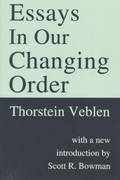5. There are six airlines that fly between city 1 and city 2. The airlines are called A, B, C, D, E, and F. Last year, their revenues from passengers on flights between the two cities were: Airline Revenue A $150,000 $200,000 C $100,000 $250,000 $75,000 $225,000 (a) Find the market share of each of the six airlines on the city 1-city 2 route. You may express market shares as proportions (numbers between 0 and 1), or as percentages (numbers between 0 and 100), as long as you are consistent, and are clear about which you are using. (5 points) (b) Find the four-firm concentration index for the city 1- city 2 route. Again, you may use proportions or percentages. (5 points) (c) Calculate the Herfindahl-Hirschman index (HHI) for the city 1-city 2 route. Even if you use a calculator to obtain a final answer, write down an exact expression for the HHI. (10 points) (d) This graph, which may be familiar, contains information about the HHIs for actual U.S. air routes: Figure 8: Market Concentra irline Industry by City-Pair Market Size, 2007-2012 Market co 3.400 2.190 2007 200 2000 2010 2011 2012 Int quindie pargest market sire) Note: Each quintile contains approximately the same number of passengers, but the number of city- pair markets differs. For example, in 2012 the ifth quintile contained 37 99. 237, 682, and 9,379 city-p ercent of the 411 million passengers in our sample Note: for this graph, HHIs were calculated with market share percentages, which leads to HHIs between 0 and 10,000. Explain, without referring to HHIs, what this graph is telling us about how industry concentration in airline markets (city pairs) is systematically different in pairs with different numbers of passengers. One or two clear sentences would be sufficient. (8 points) (e) The same relationship between the size of a market, and the concentration of industries in that market, that is observed in the graph in part (d) can be found for all kinds of industries and types of businesses. Explain briefly what fixed production costs, or the costs of starting up a business or firm, have to do with the relationship between market size, and industry concentration. (9 points)







